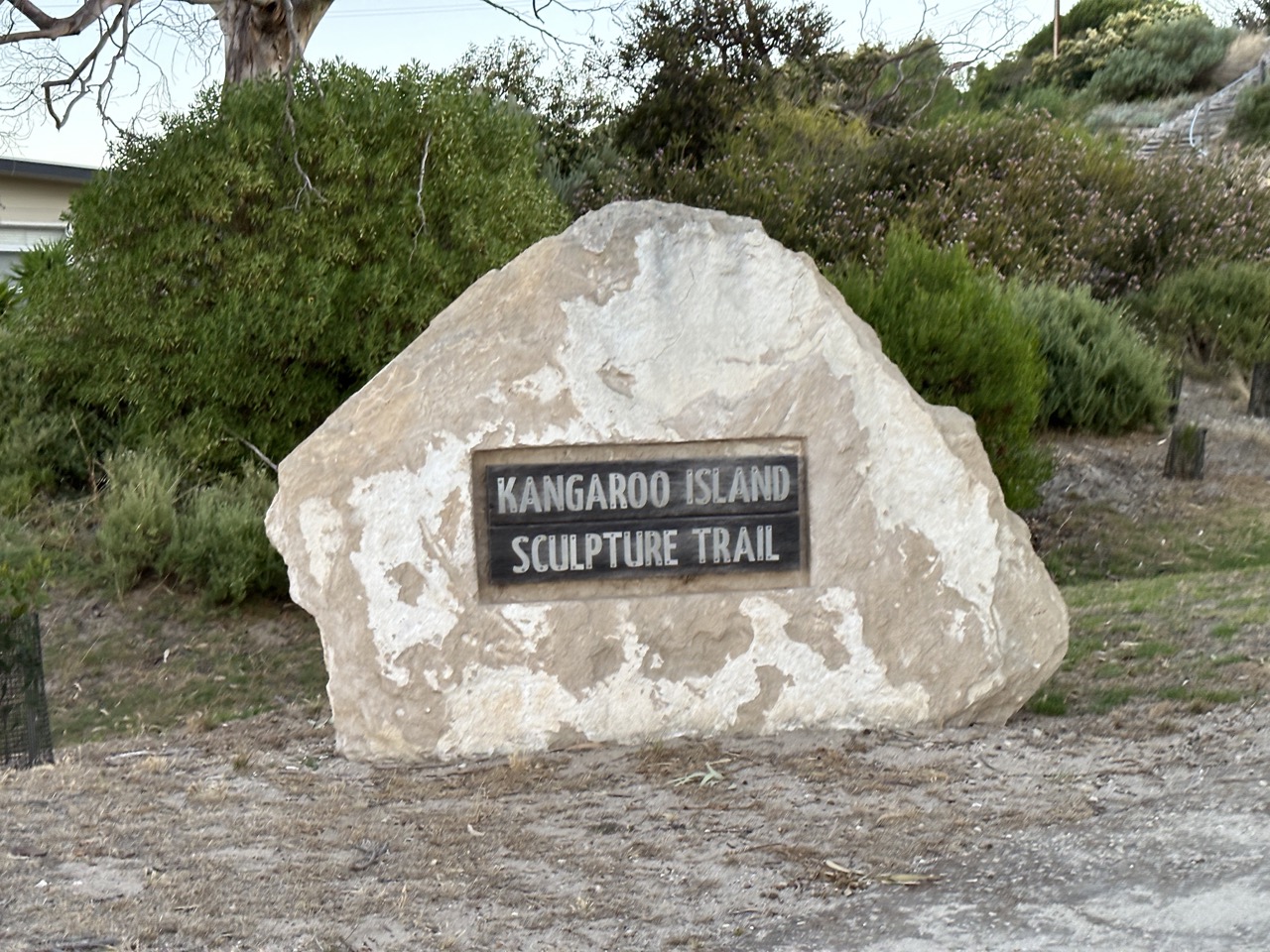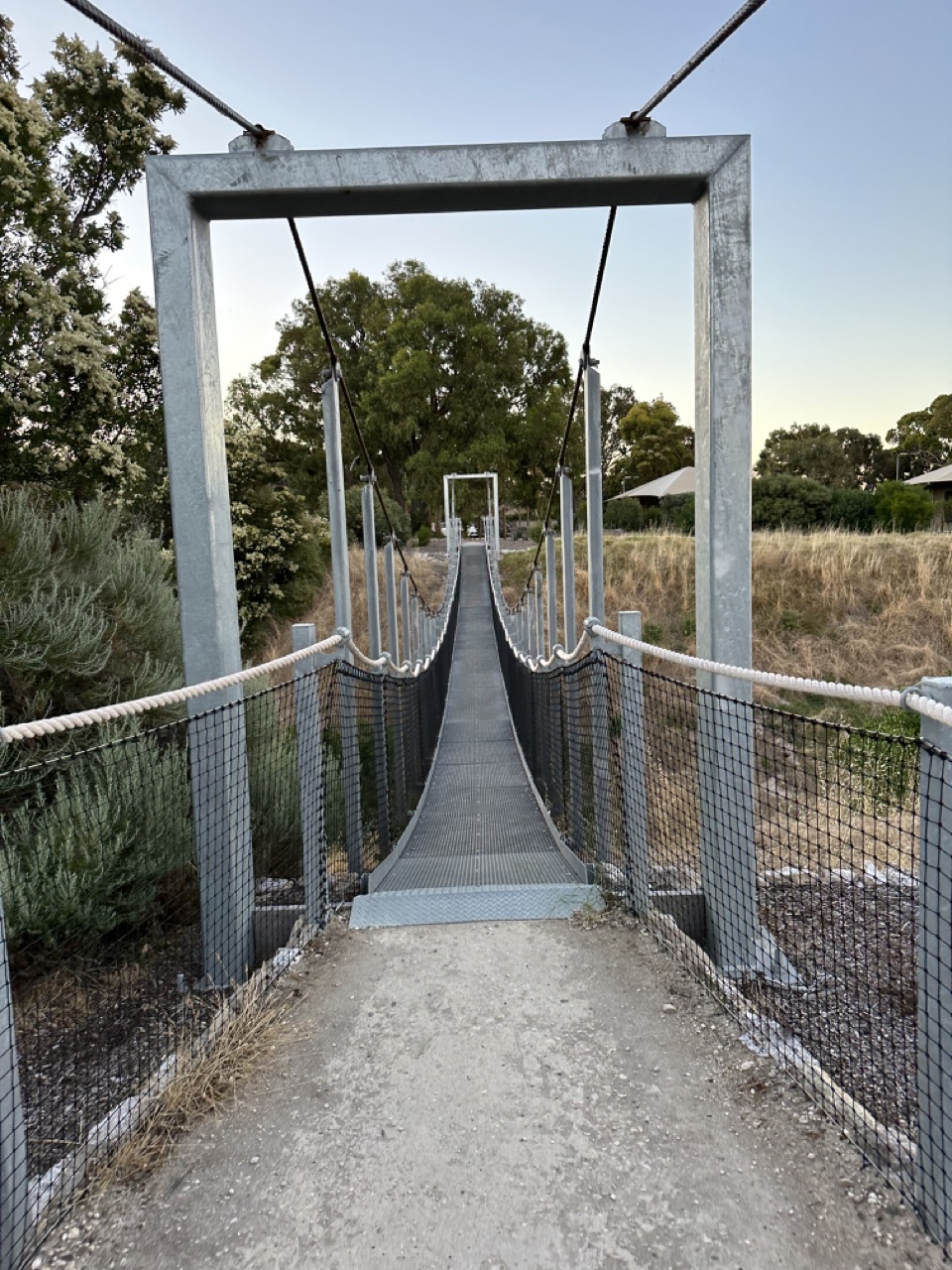Justin Applefield
Kangaroo Island Part 1
February 7, 2023
One of the main reasons I came to Adelaide was that there were convenient flights to Alice Springs, but another reason was to visit Kangaroo Island which is located nearby. Today was day one of my 2-day trip to Kangaroo Island that I had booked. There are two parts: a "sip and see" tour where you visit various local farms, and a "highlights" tour where you see nature and animals, and the two are offered on alternating days. Most visitors do the highlights first, but I would be doing the sip and see first because it worked best for my schedule.
I woke up early and headed to Adelaide Central Bus Station, located just a block away from my hotel. The bus ride took about 90 minutes to Cape Jervis, where the Kangaroo Island ferry departs. Along the way, our bus driver Phil informed us of all the roads we were driving on while we were in the city, and of all the scenery we were seeing after we had left the Adelaide suburbs.
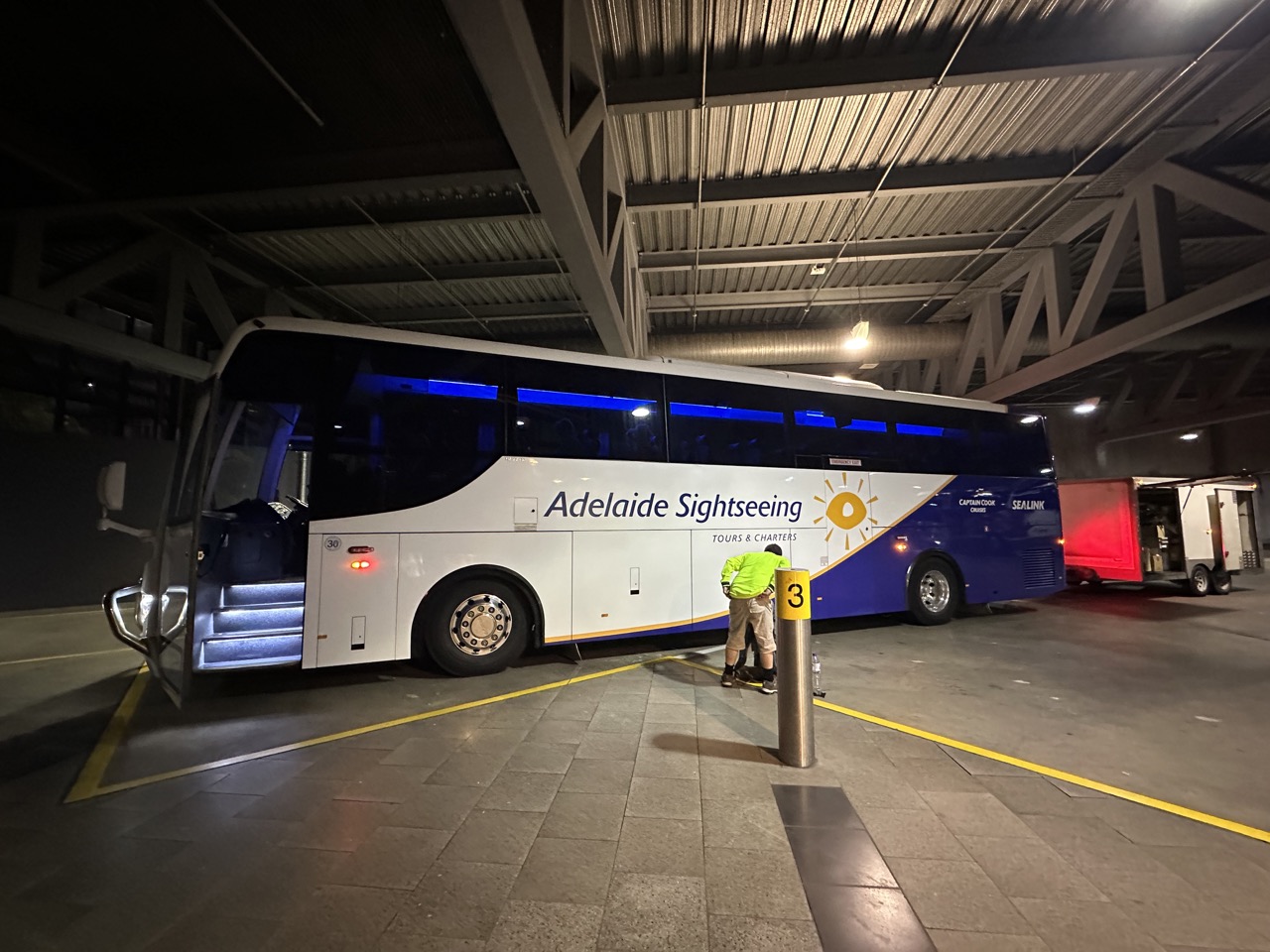
Before long we made it to Cape Jervis. In addition to the ferry terminal, Cape Jervis also has the start of the Heysen Trail, a 1200km long trail through South Australia. Before boarding the ferry there were a few signs talking about the biosecurity procedure to enter Kangaroo Island. It is prohibited to take rabbits, bees, bee products, or unwashed potatos onto Kangaroo Island, in order to protect the local ecosystem.
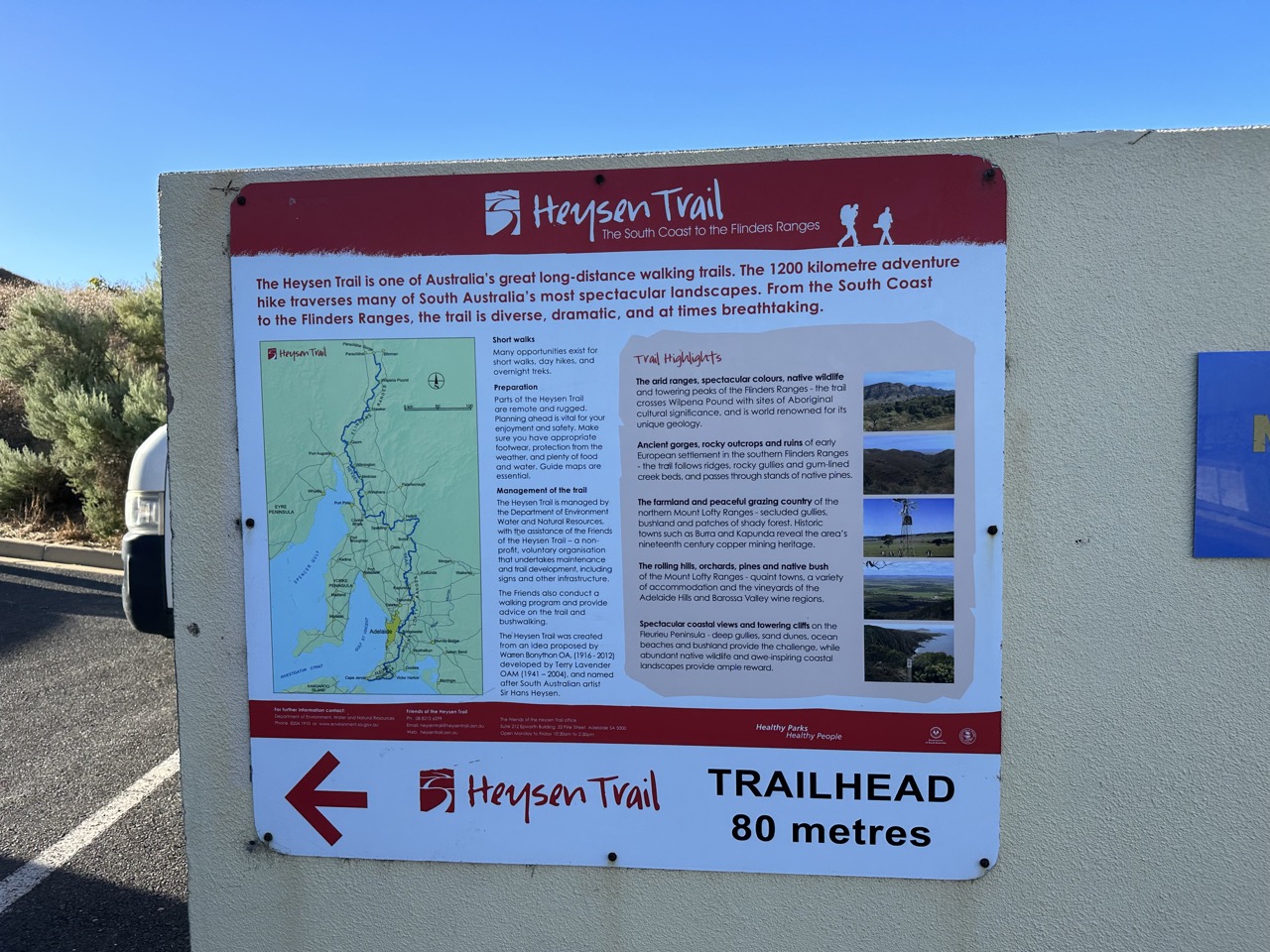
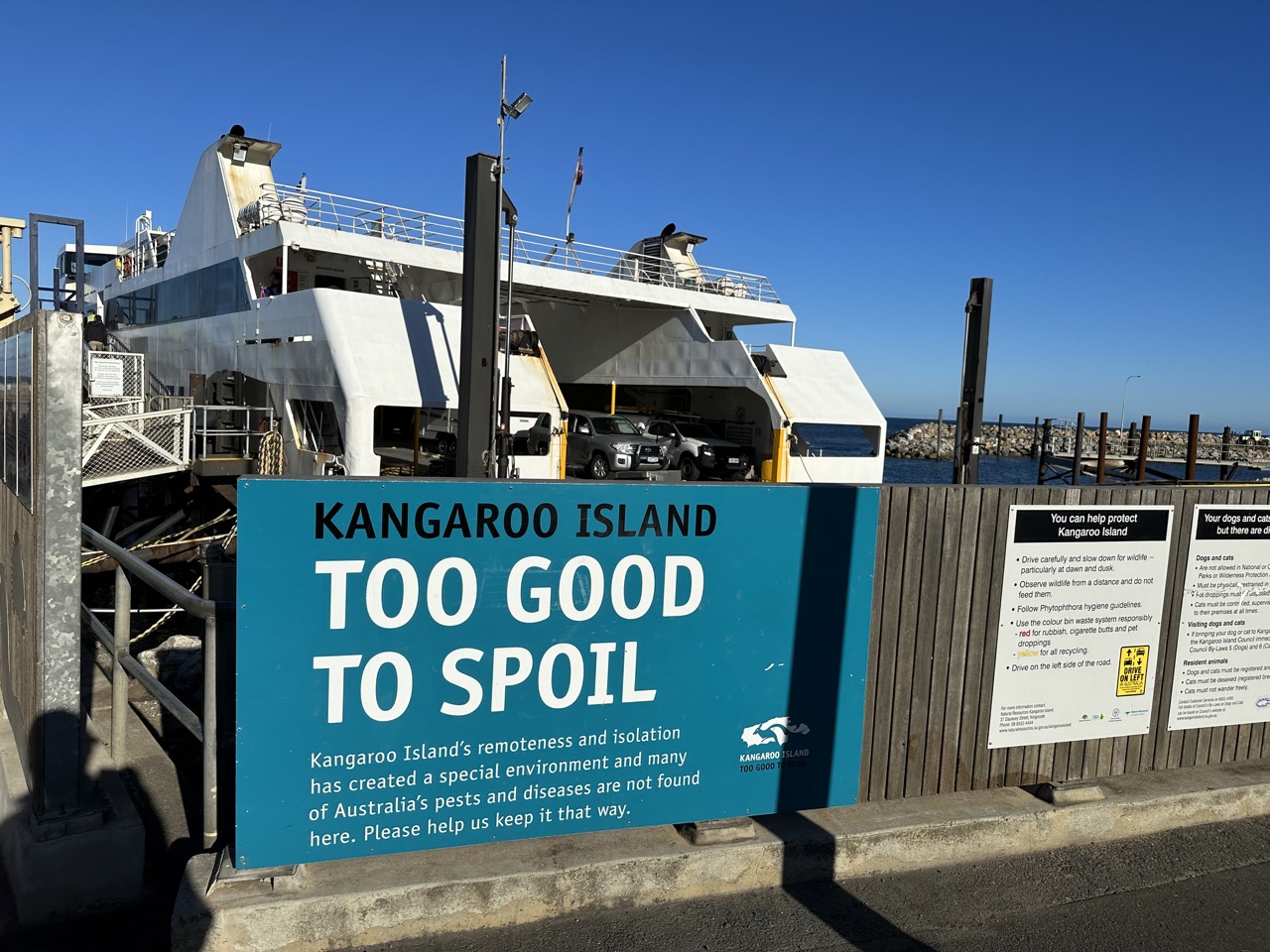
The ferry was incredibly bumpy, and I was imaging the cars on the deck below all rolling around and crashing into each other. I got hungry along the way so I purchased an overpriced sausage roll from the concessions.
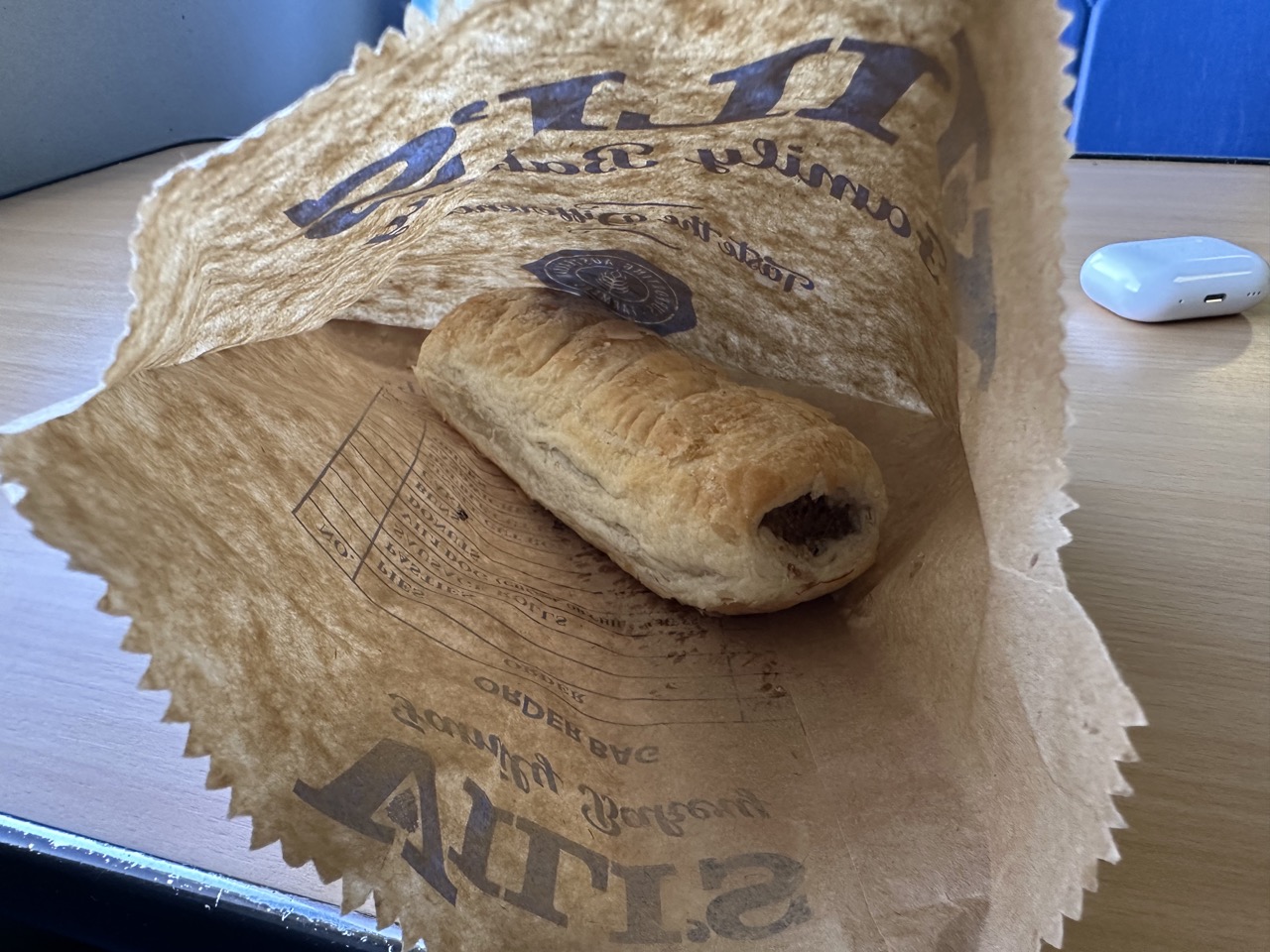
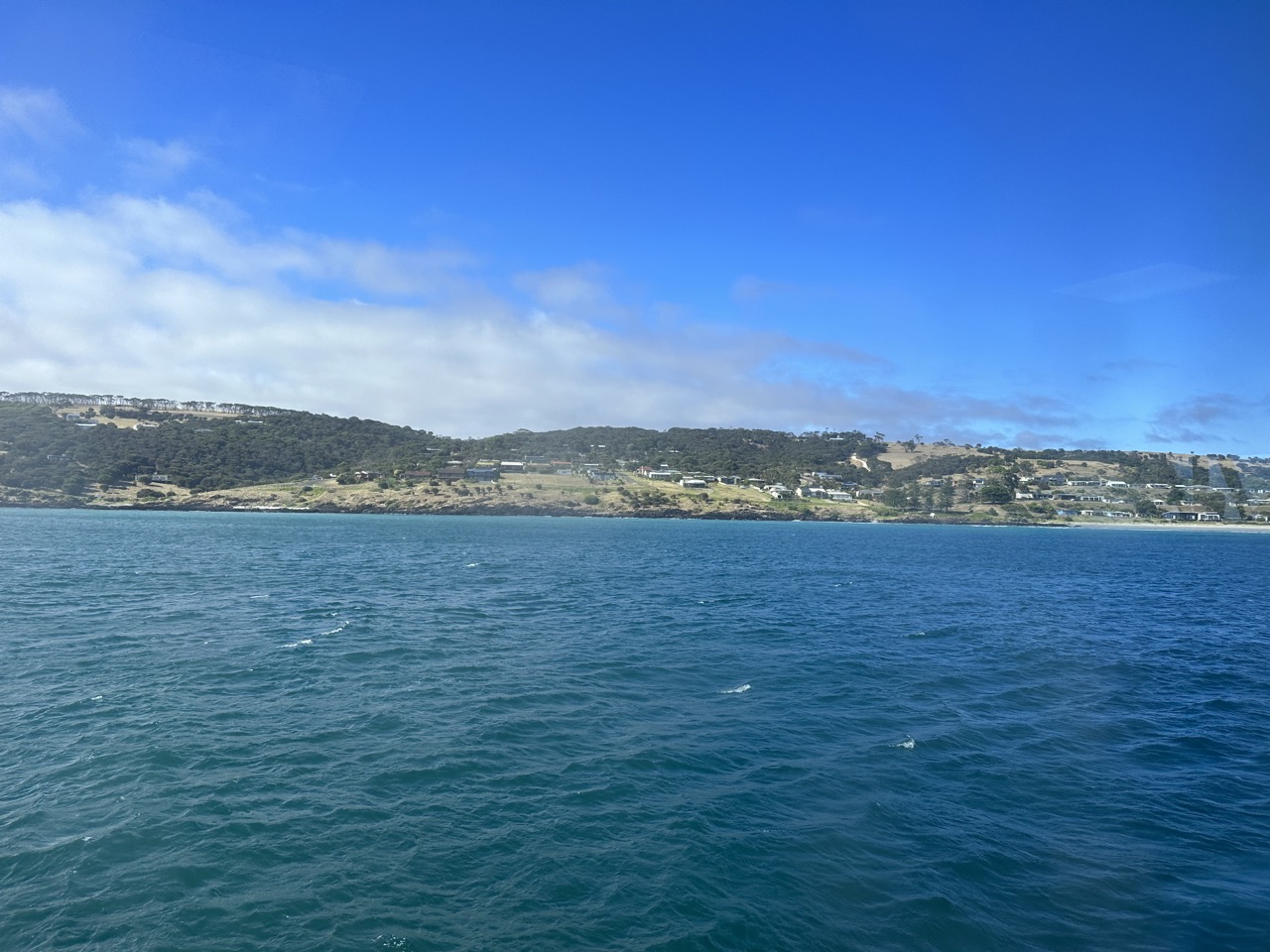
The ride was about fifty minutes long, and once disembarking the ferry, I was greeted by a new bus driver Garry, who already had a bus mostly full of people who had done the highlights tour the day before. Aside from myself and a Spanish couple who appeared in their late 20s, everyone else on the bus was at least 50 years old, so I felt a little out of place.
It was a long drive to our first stop, so Garry told us all about the history of the island. The first European to discover it was Matthew Flinders, who was circumnavigating Australia. His crew came ashore dehydrated and starving, and they were able to dig for fresh water and hunt wild kangaroos for food. While surveying the island he encountered Nicolas Boudin, a French explorer. England and France were at war at the time, but they met under truce. Many of the places on the island have French place names, as named by Boudin. Additionally, American sealers came to the island early on and killed many of the native seal population for their blubber an fur. There is a settlement called American River where they landed.
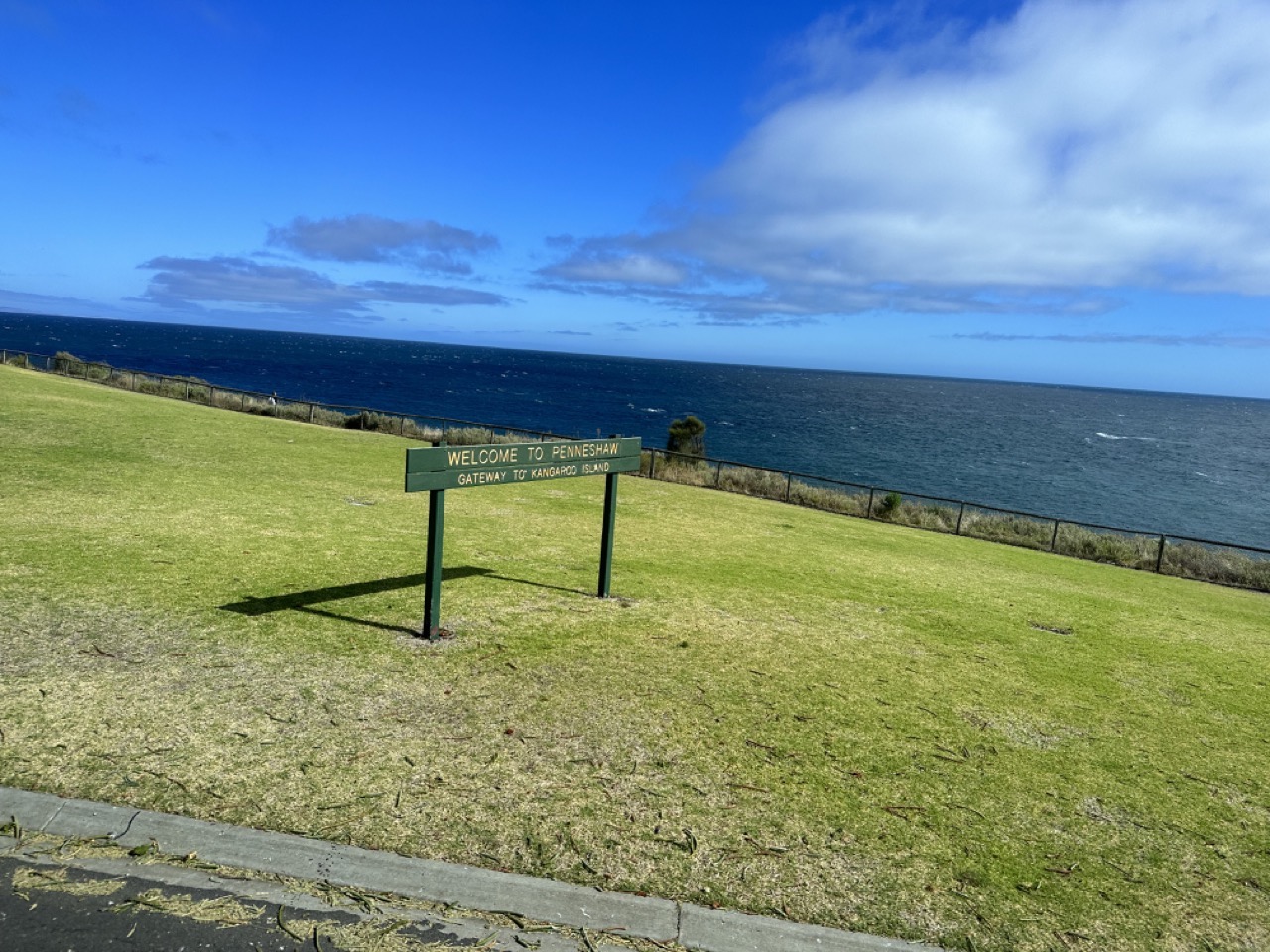
Our first stop on the tour was Raptor Domain, a bird conservatory that had a show. The rangers Chantelle and Billy showed a variety of birds including an Australian magpie, Tawny frogmouth, white-necked heron, barn owl, boobook owl, sooty owl, various parrots, and a wedge tailed eagle. There was a big emphasis on how people could help to protect the birds by preventing deforestation (such as by purchasing recycled toilet paper), by driving carefully, and by putting up decorations on power lines so birds don't fly into them. The show was very interactive, and everyone had an opportunity to old and pet a bird at some point. I had a barn owl sit in my lap. At the start of the show, they demonstrated the intelligence of the magpie by having it pick up trash and deposit it in a garbage bin. Apparently magpies can remember more than a hundred faces, and pass that knowledge onto their children. Another highlight was a blue and gold macaw that kept harassing Chantelle by flying to her as she tried to tell us about a different parrot.
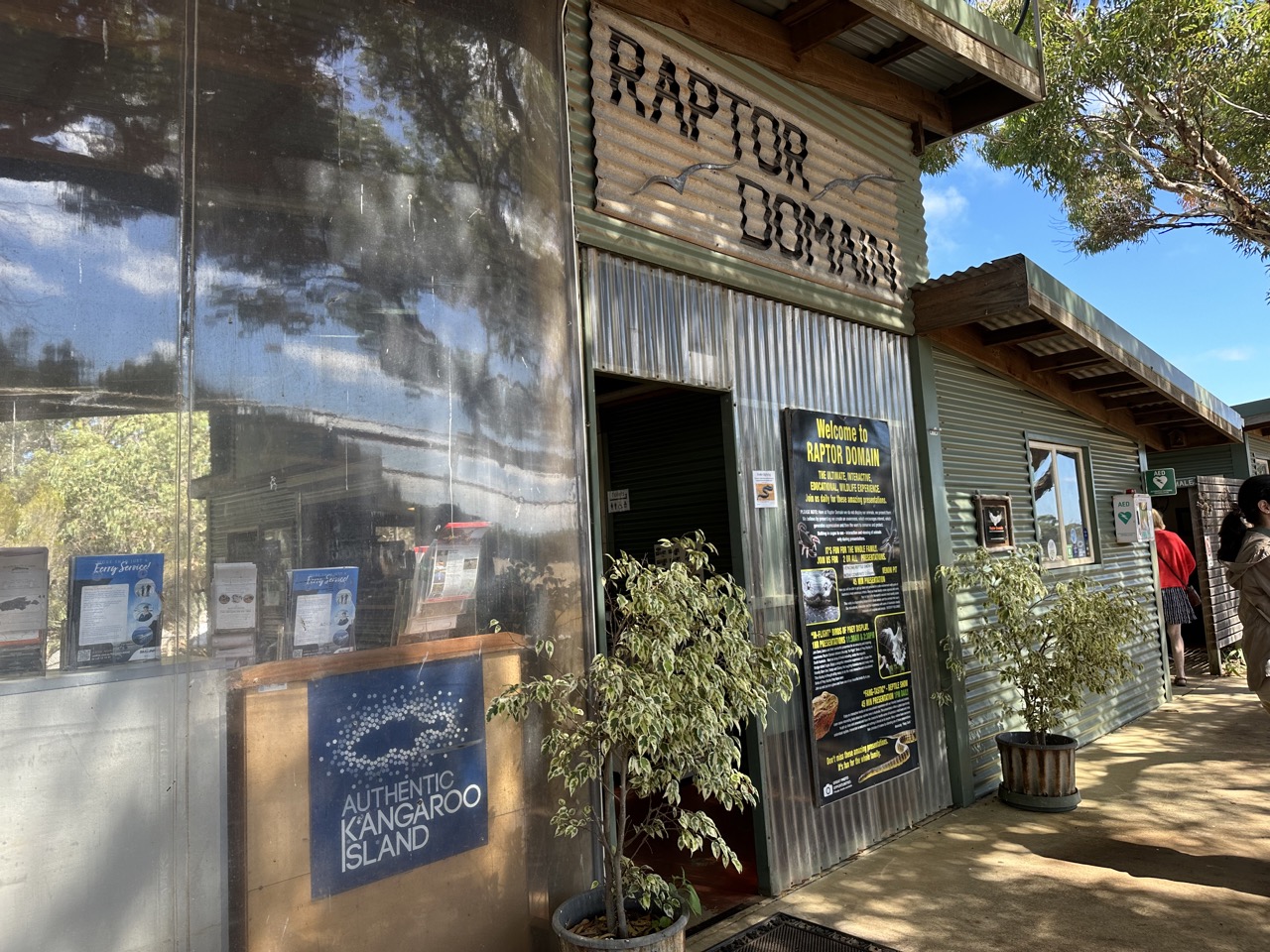
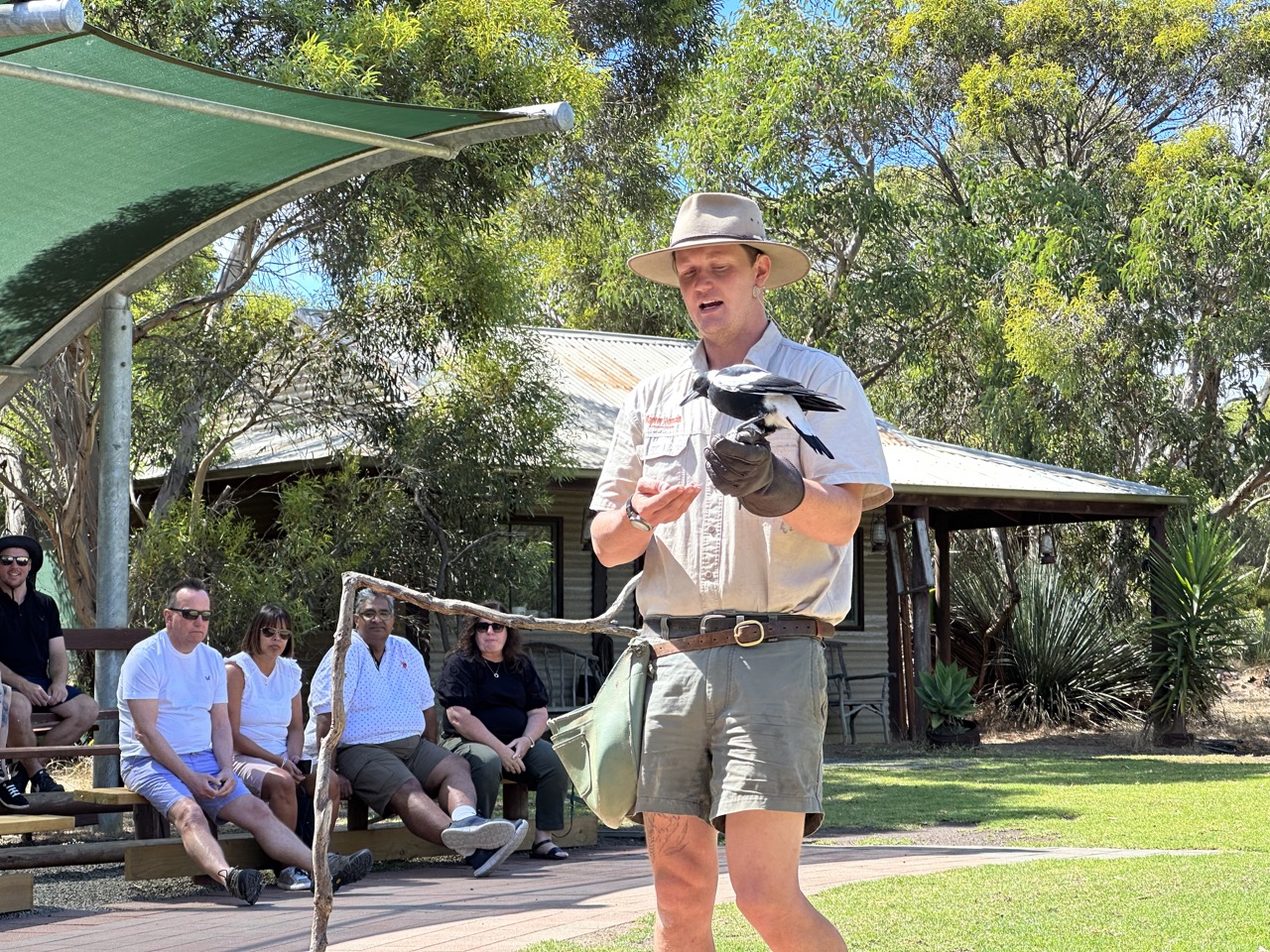
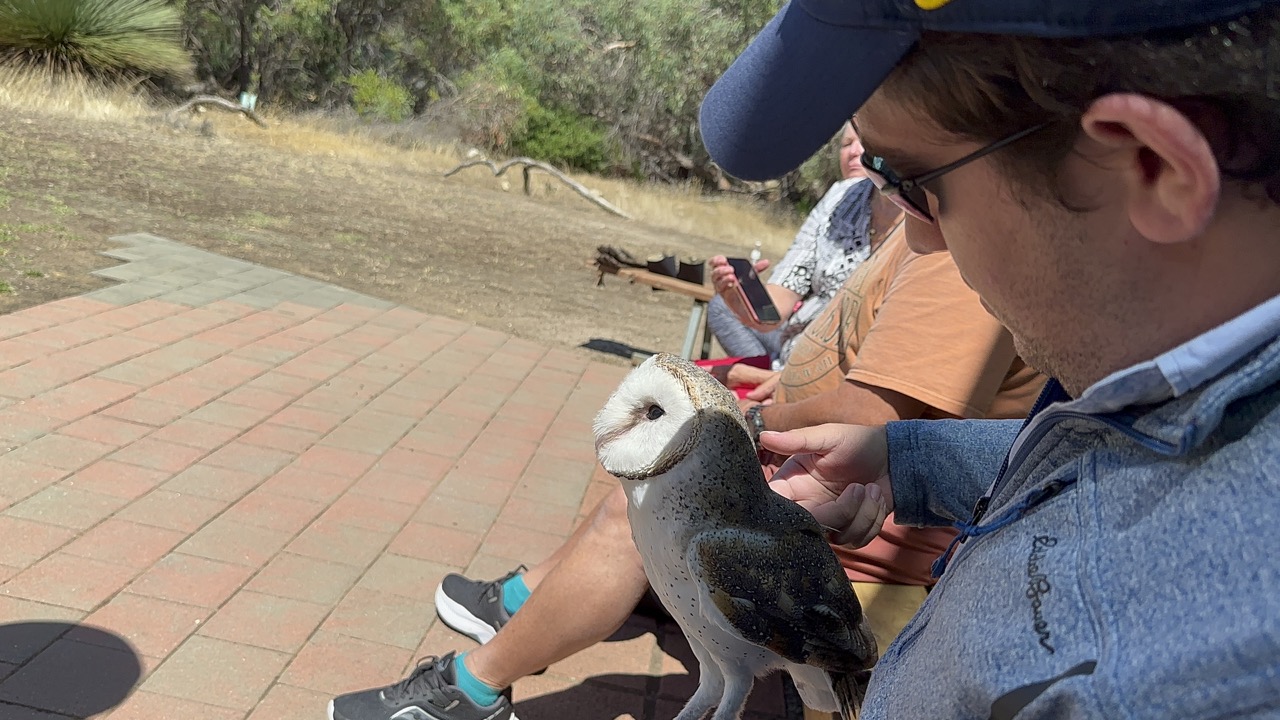
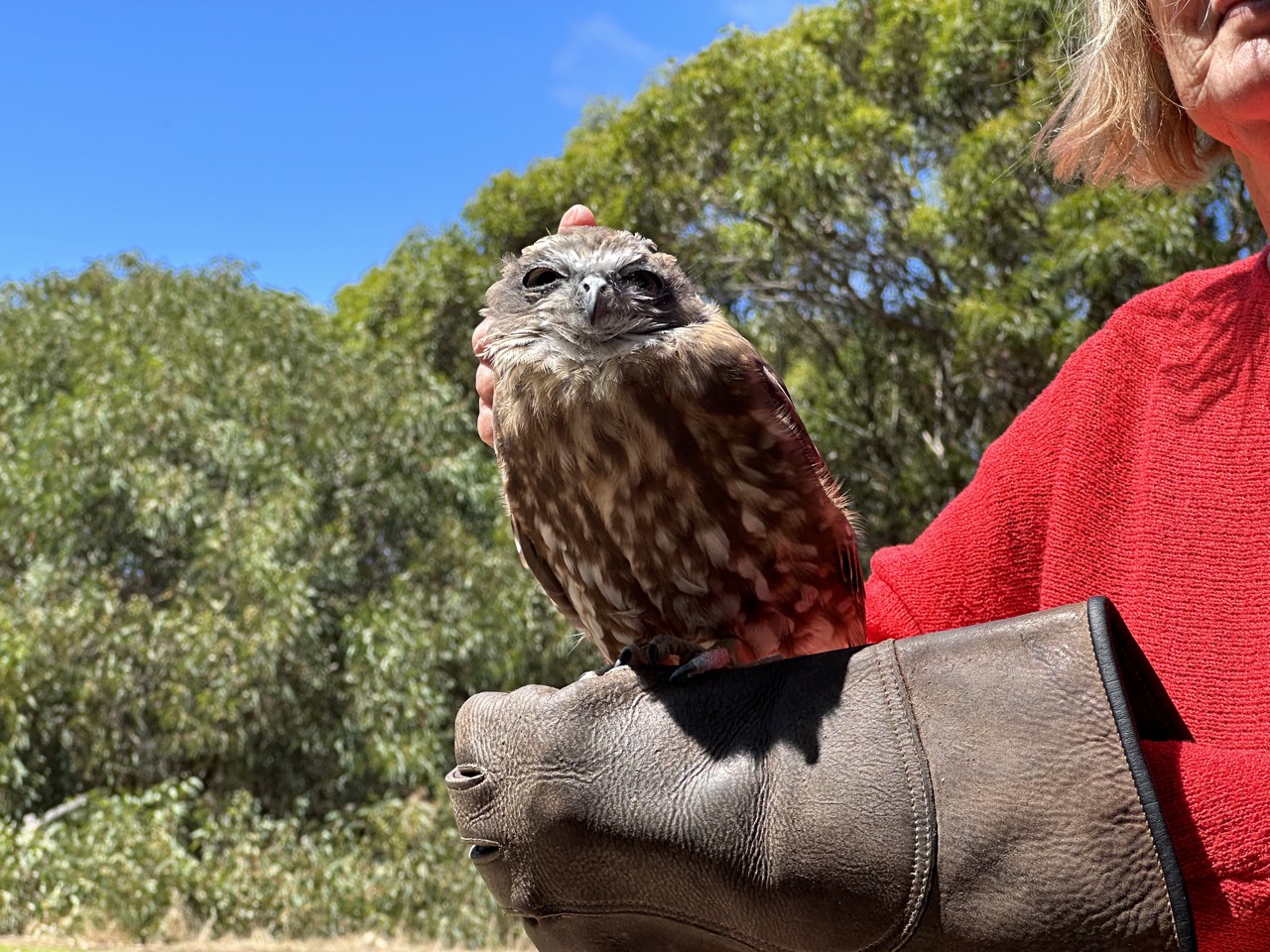
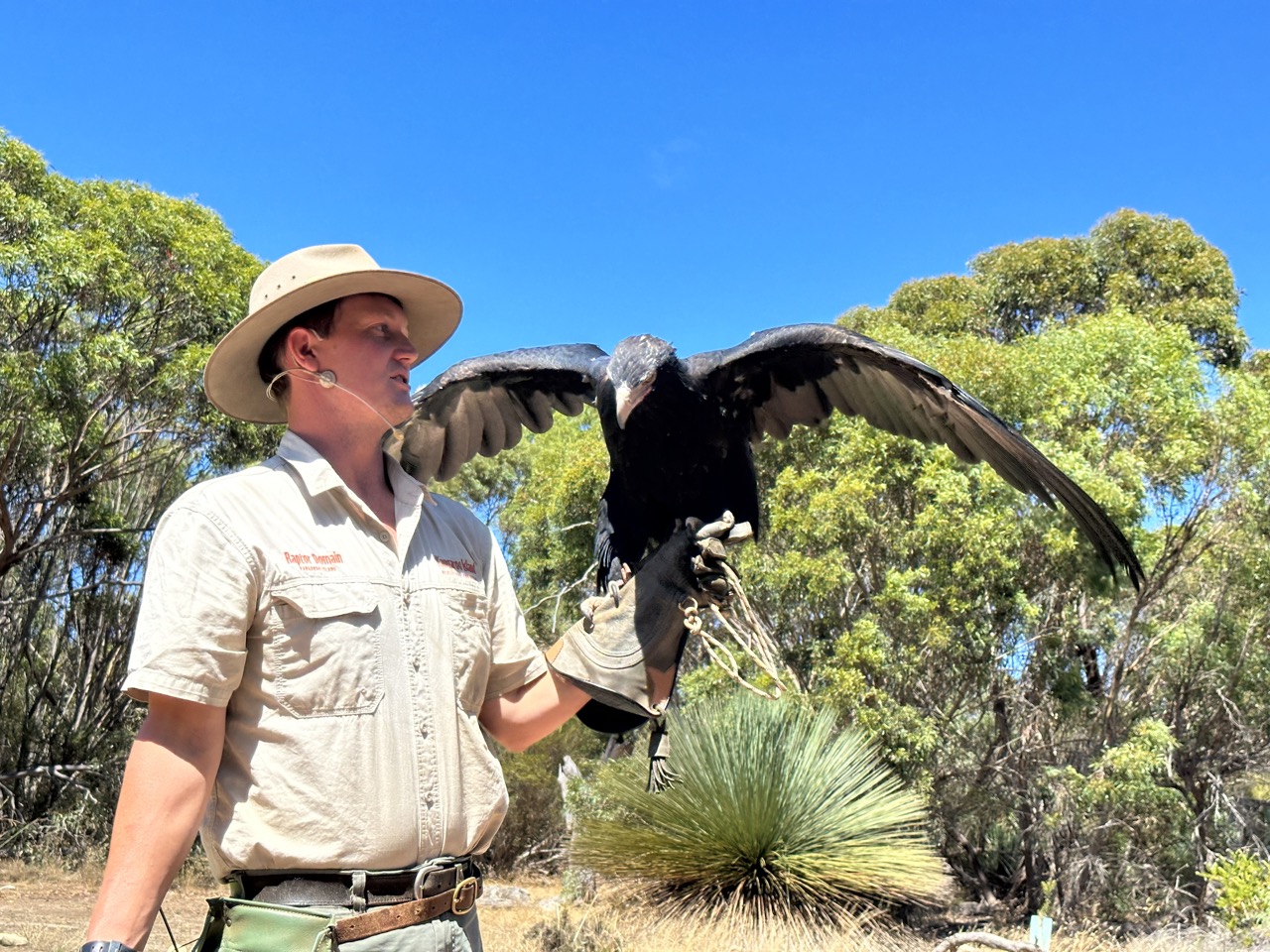
After the bird show, we headed to Emu Ridge Eucalyptus Oil Distillery. Eucalyptus Oil was once a thriving industry in Australia but it is now mostly distilled in Brazil or China. Emu Ridge brought the industry back to Kangaroo Island. They have a large farm with eucalyptus trees, and they showed us how they run steam through the leaves inside a large furnace to extract the oil as a vapor, and then double distill it to separate the vapor from the steam. We also ate lunch at Emu Ridge, and there was an opportunity to taste four types of local ciders: original, draught, vintage (barrel aged) and non-alcoholic. I thought the draught cider was pretty good.
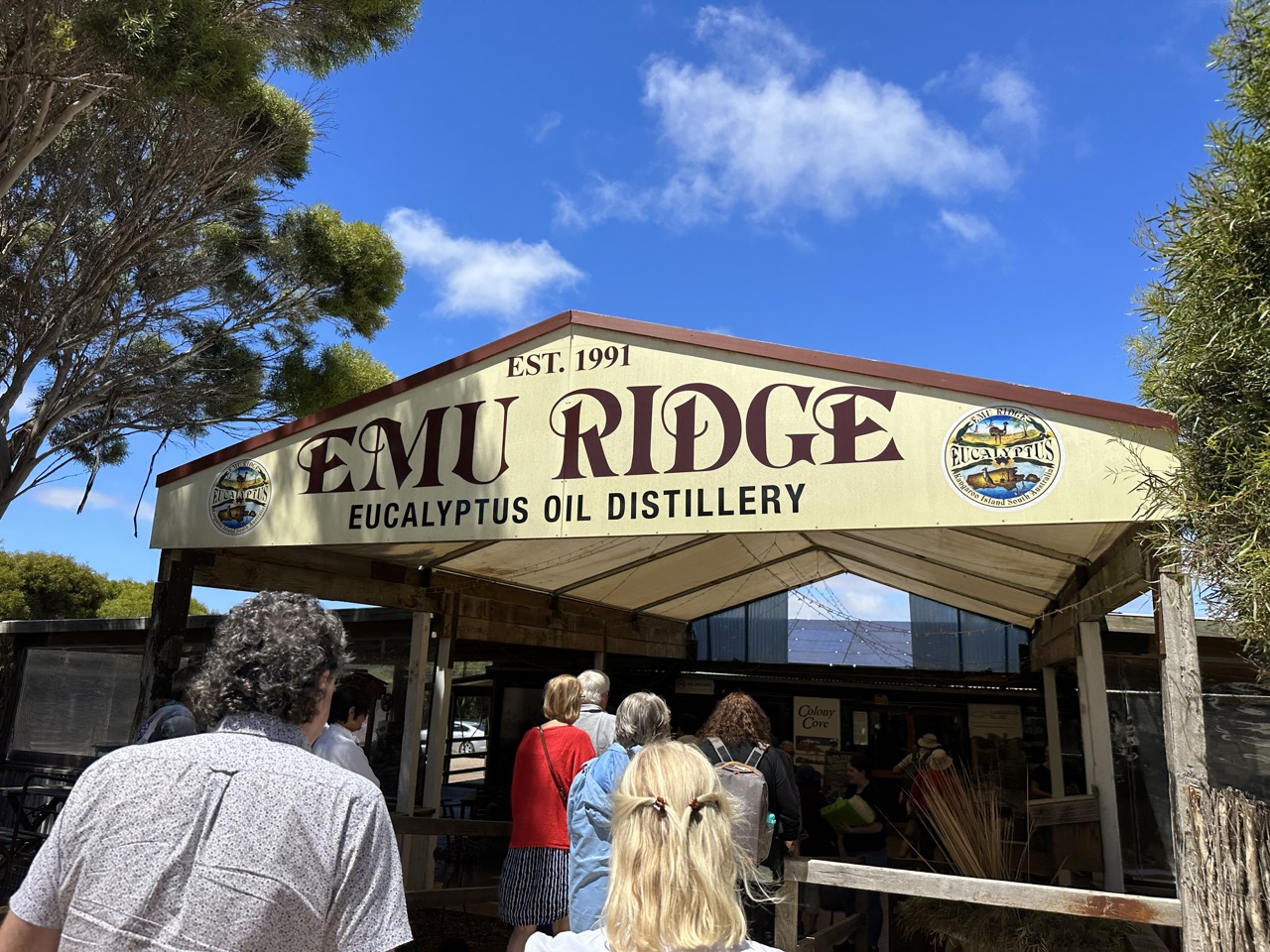
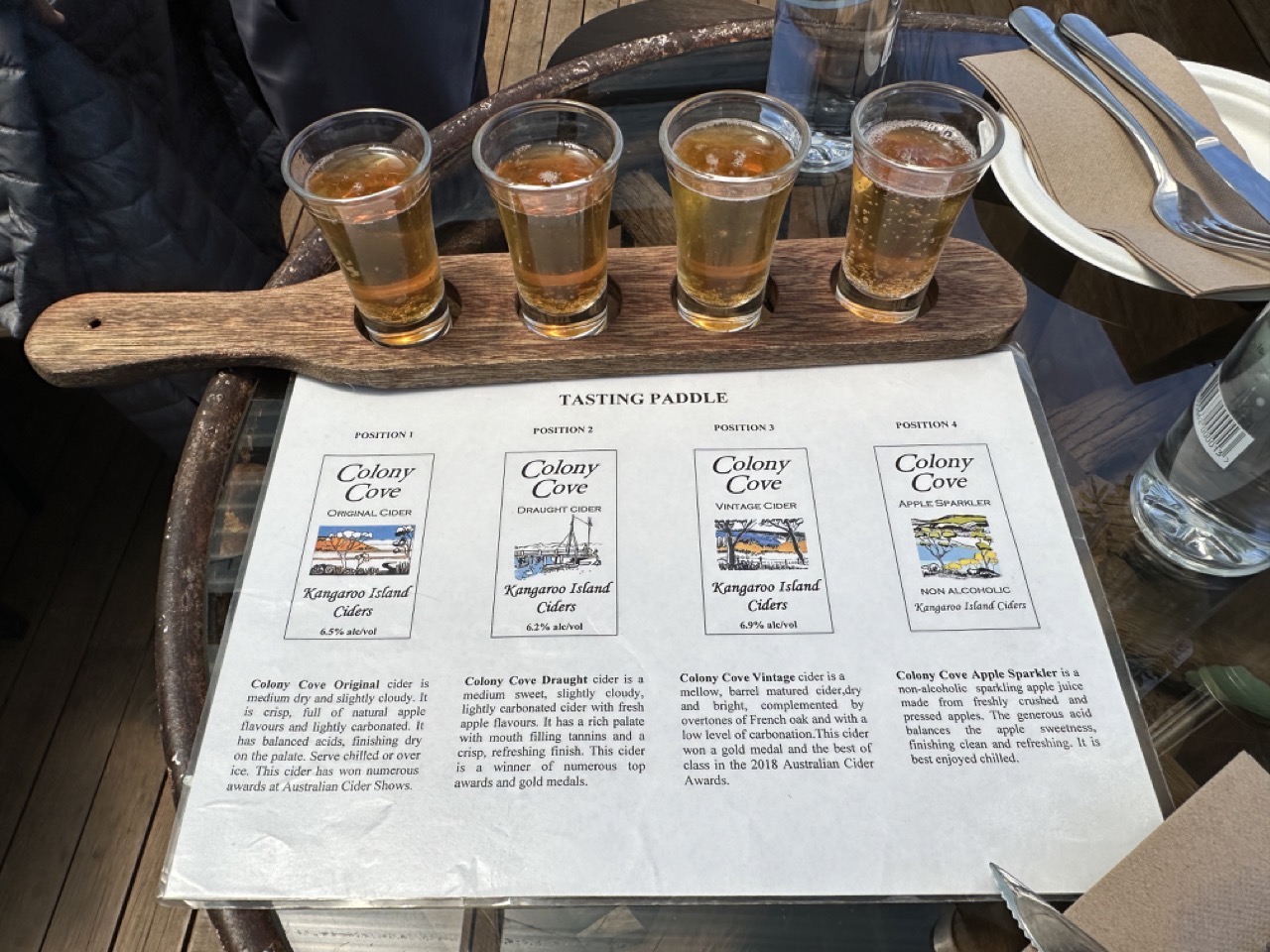
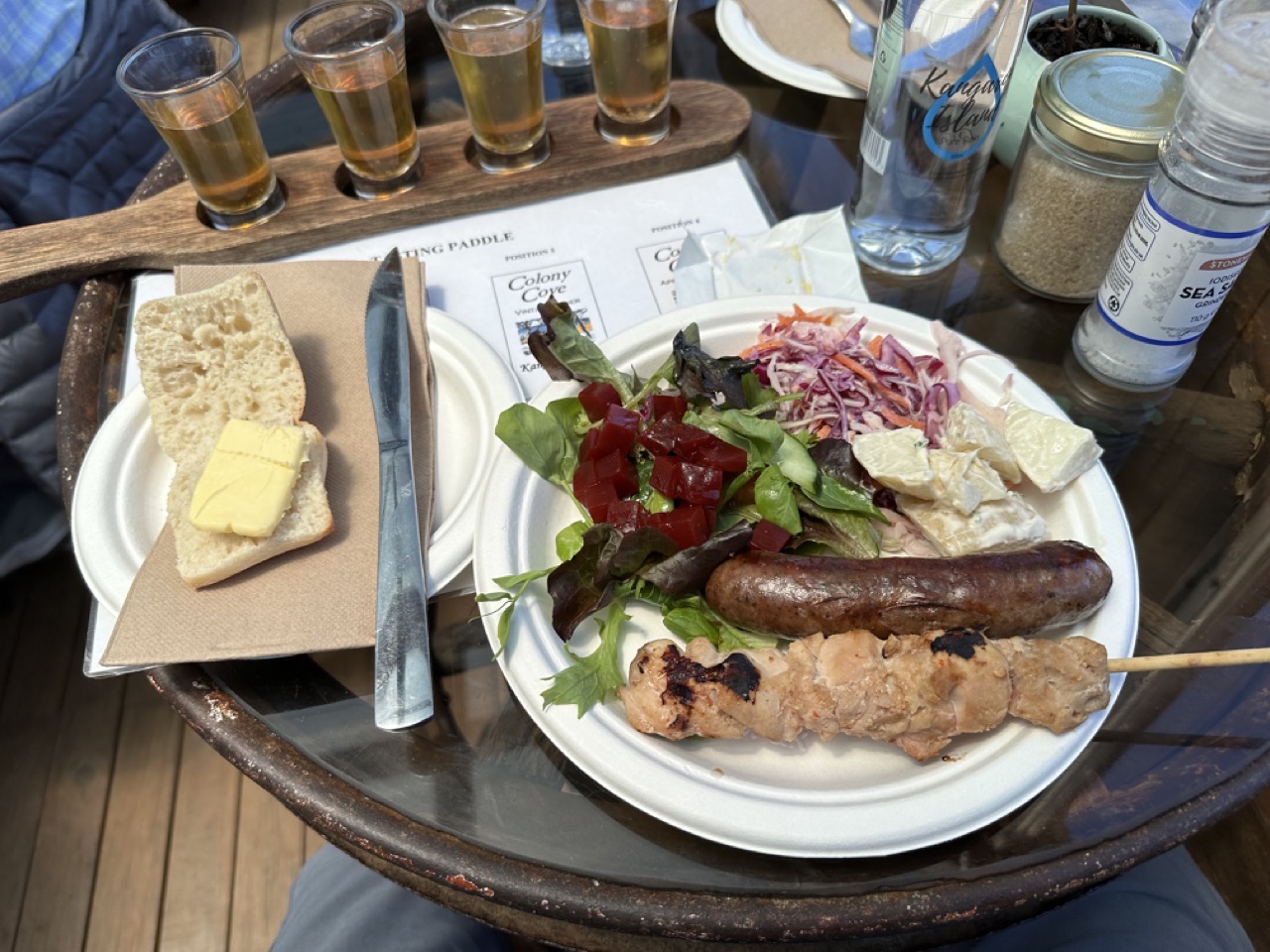
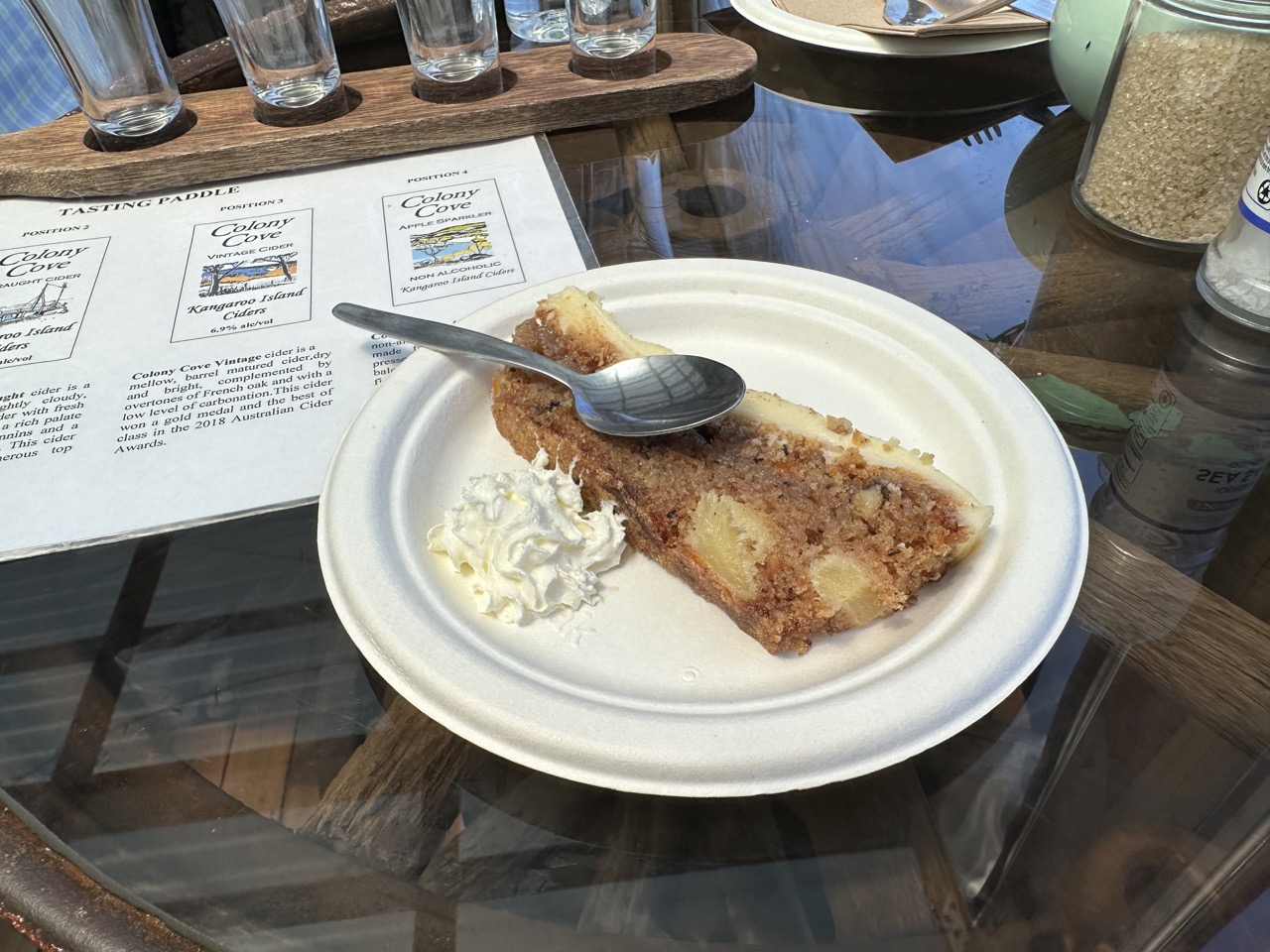
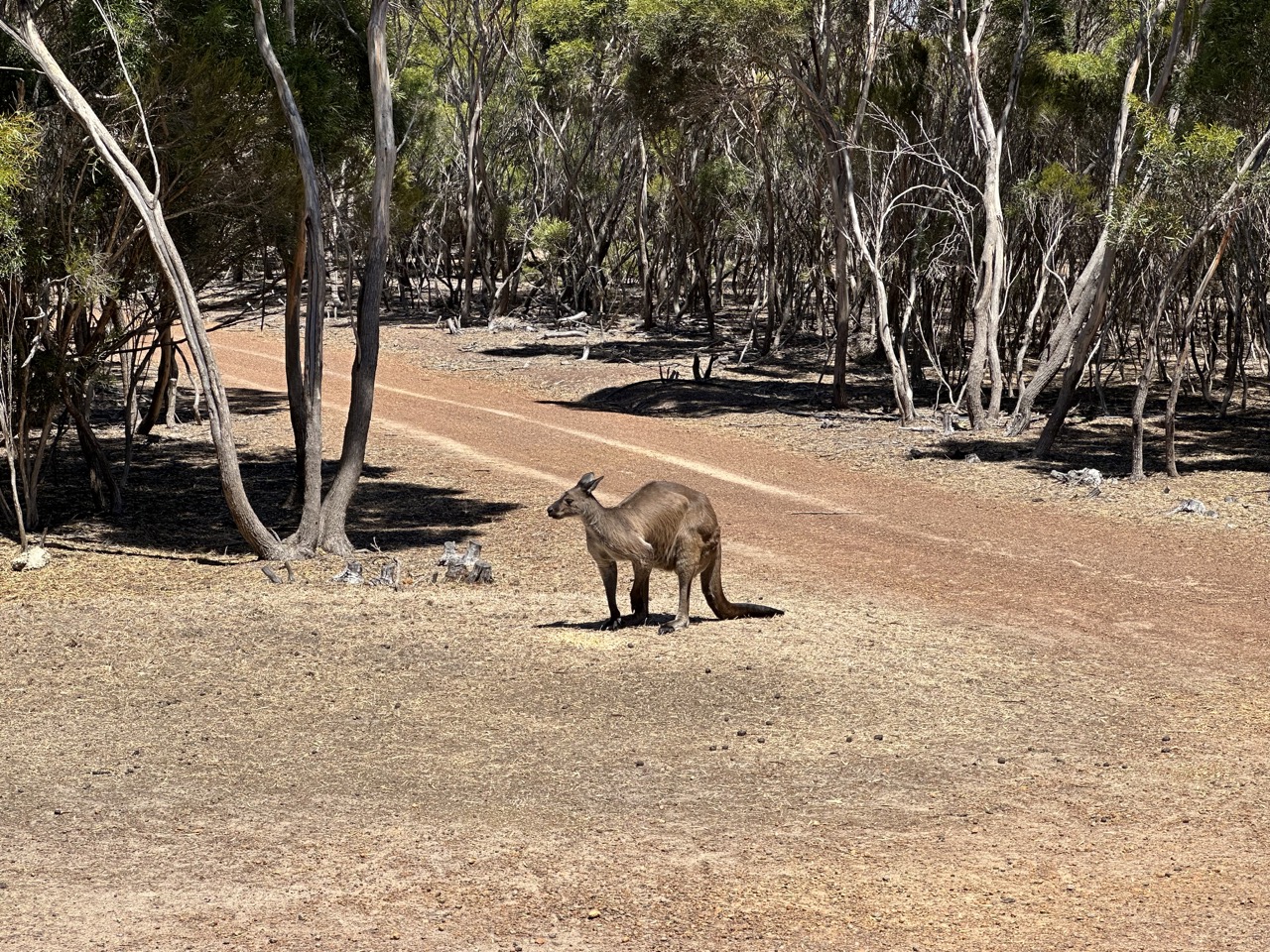
After lunch we went to the Clifford Honey Farm. It used to be a sheep farm, but years ago there was a decline in wool prices and many local sheep farmers suffered and had to pivot. This family decided to start a honey farm, because the owner was a hobbyist beekeeper. In the 1880s the South Australian government brought Ligurian Honey Bees from Italy to Kangaroo Island, because they are somewhat docile and produce a good amount of honey. Because the island is too far from the mainland for the bees to fly, it is now home to the only remaining purebred Ligurian honey bees. We had an opportunity to see the machinery they use to extract honey from the hives without damaging the honeycombs. We also got to try some honey, some honey wheat ale that is brewed by the son-in-law as his hobby, and the honey ice cream that is made by the daughter. The ice cream in particular was good.
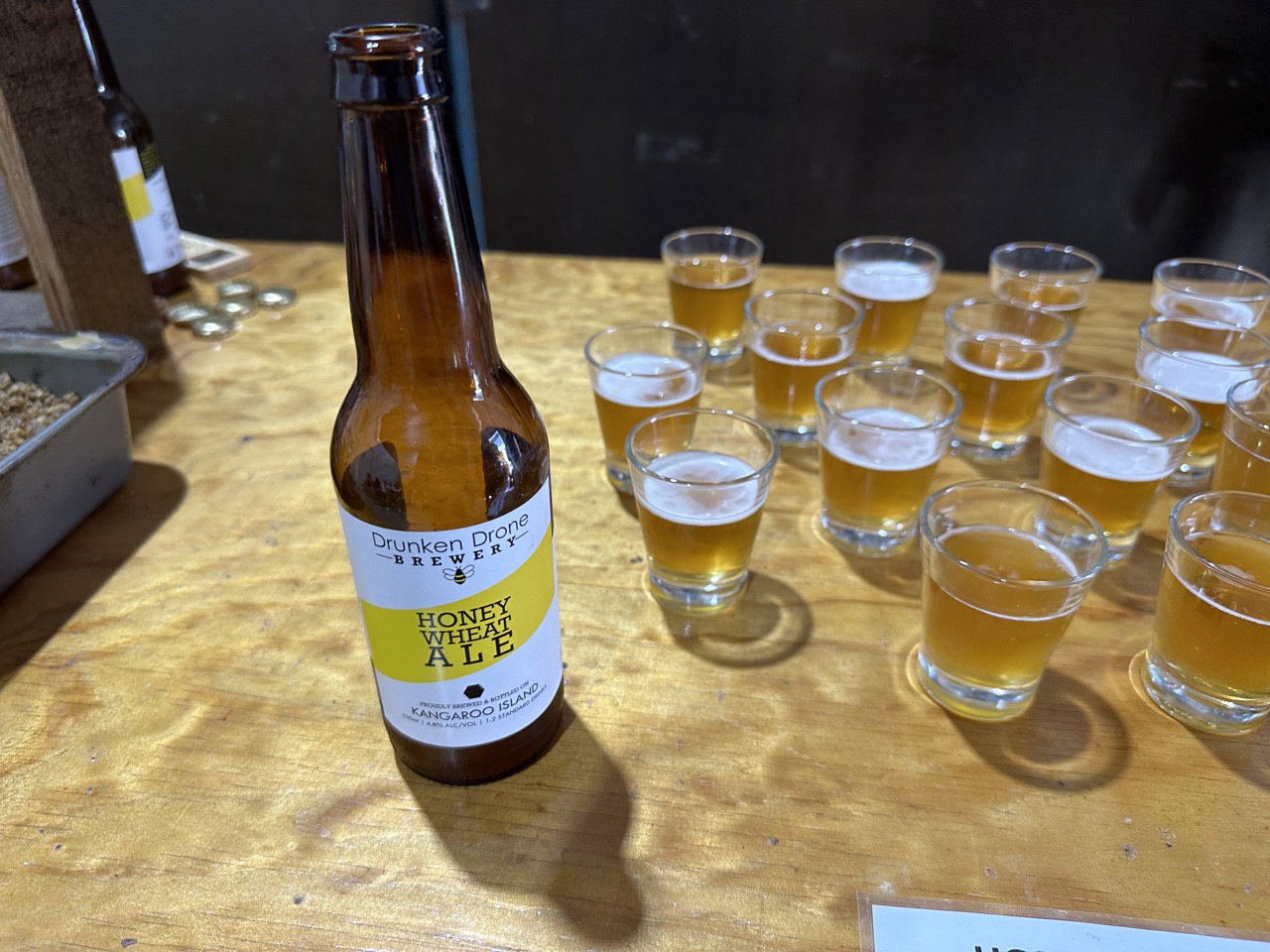
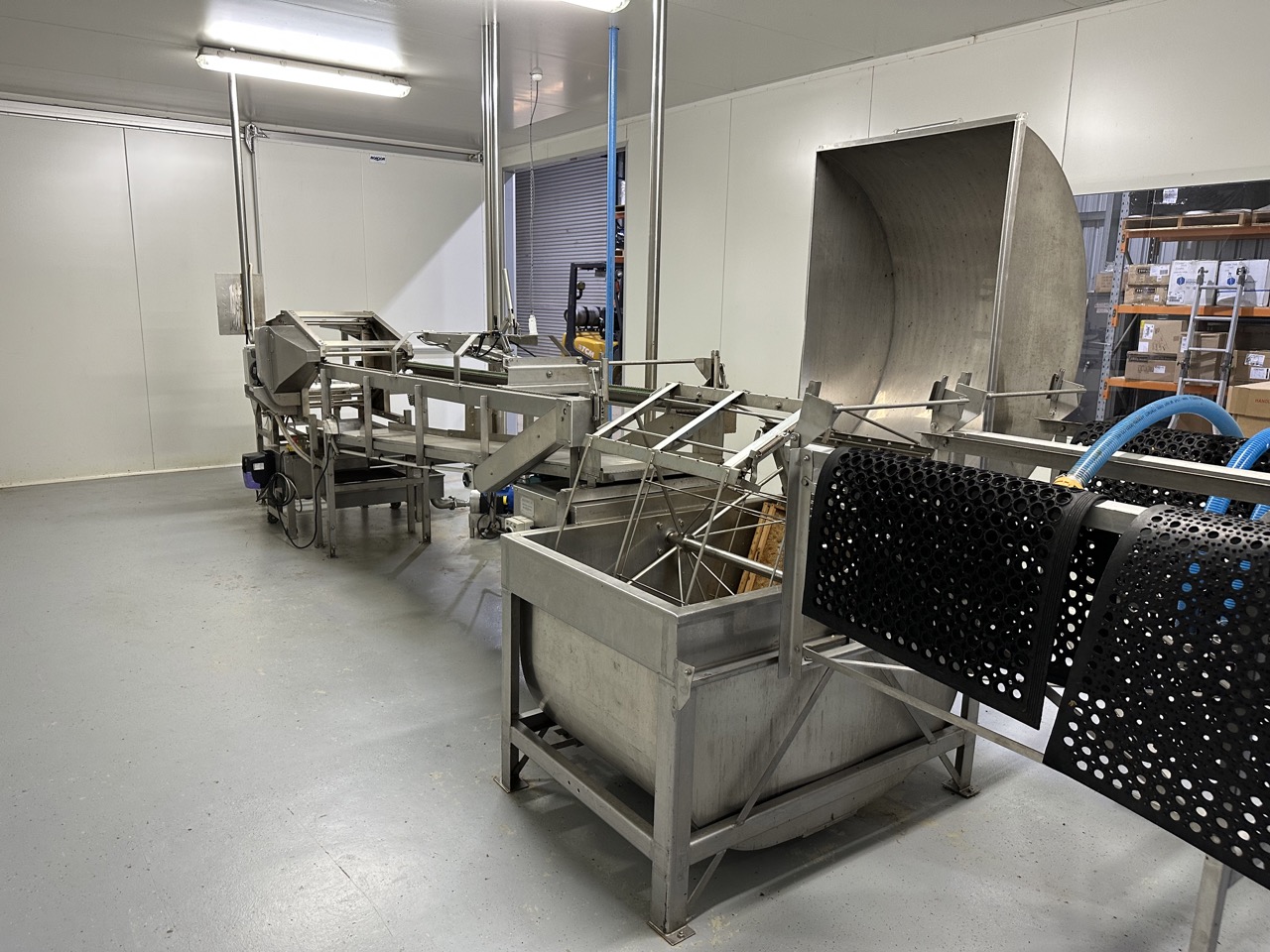
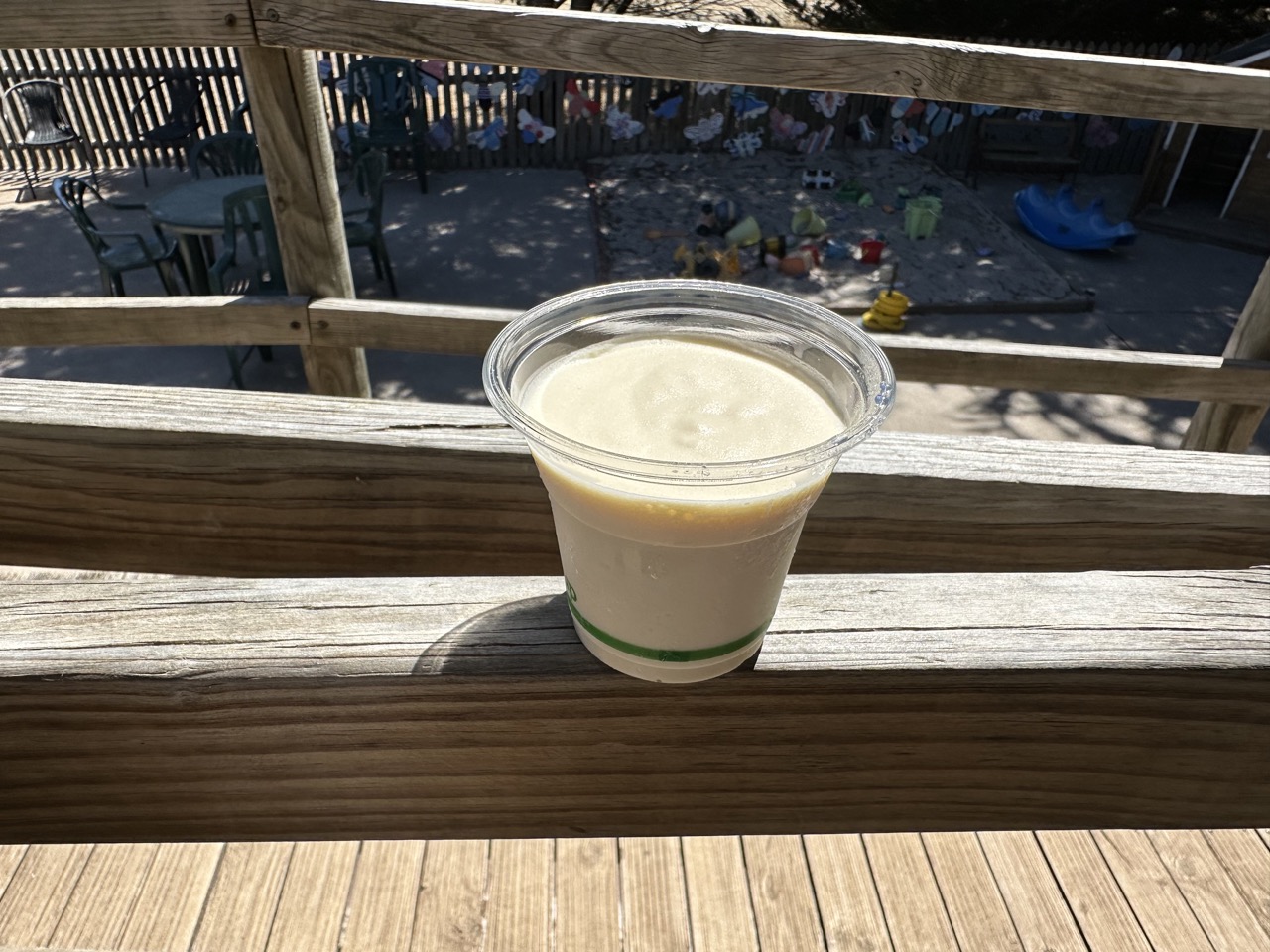
We started driving back east, and stopped at Pennington Bay, at the narrowest point of the island, to see some beautiful views of the water.
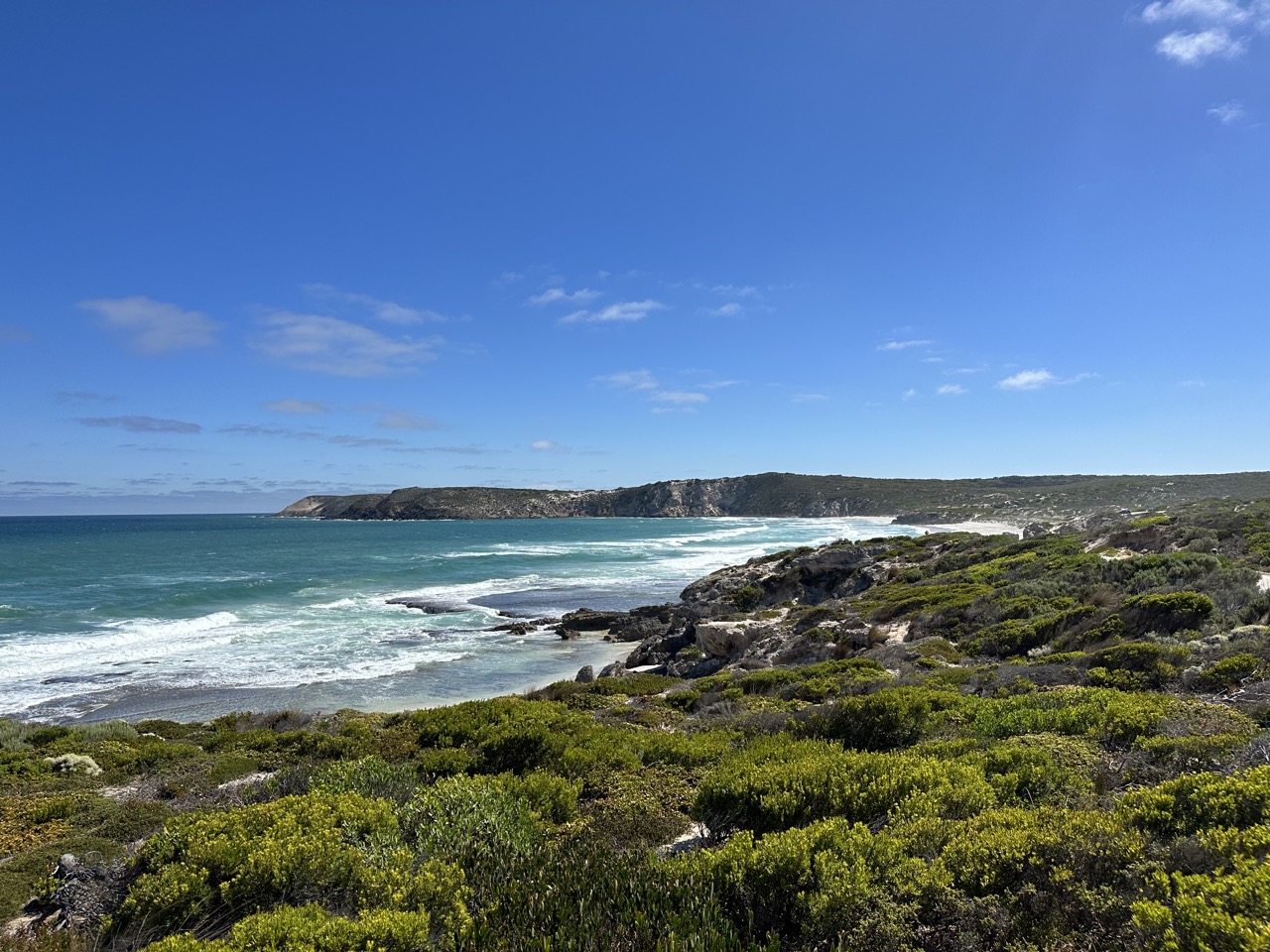
We then headed to False Cape Winery for a wine tasting. Like much of the South Australian coast, Kangaroo Island has a mediterranean climate that is good for growing grapes. At this vineyard they grow all the grapes they use for making their wines, but the actual winemaking takes place in the mainland. We tasted many wines: Pinot Grigio, Sauvignon Blanc, Riesling, Chardonnay, Rose, Shiraz, Cabernet Merlot, and Fortified Shiraz. I really know nothing about wine and could only taste a bit of a difference between the different wines. I was sitting with an Australian couple and with a Kiwi mother-and-daughter, and they asked me how these wines compared to other wines I'd had in the past, but I just said that I don't really drink a lot of wine. I'm not sure which wine I liked the best, probably the Sauvignon Blanc.
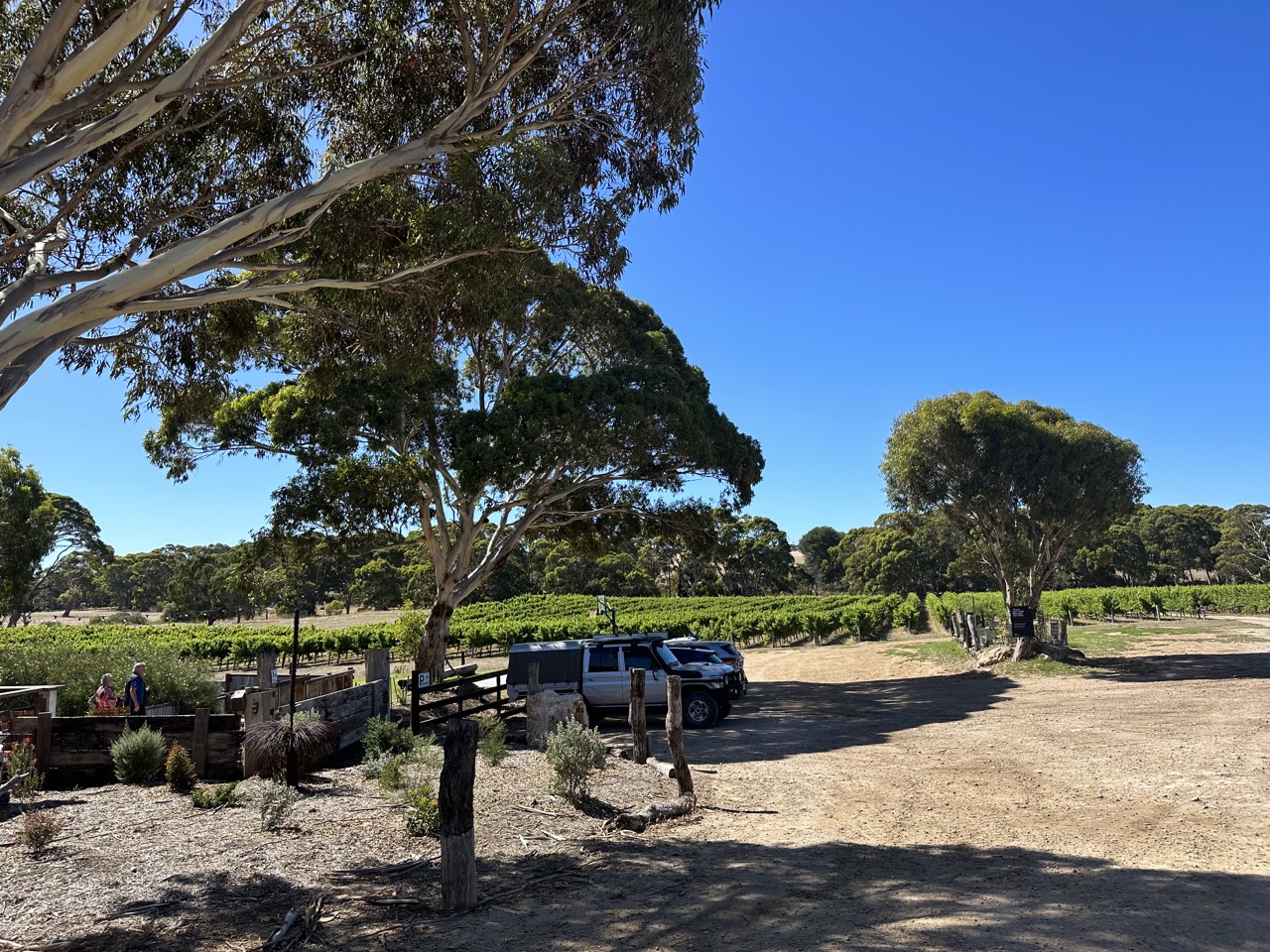
After the wine tasting we headed to the east side of the island to the Cape Willoughby Lighthouse. There are three lighthouses on Kangaroo Island because there have historically been many shipwrecks. There were lots of wild kangaroos grazing near the lighthouse, they had come out in the evening as it started to cool down.
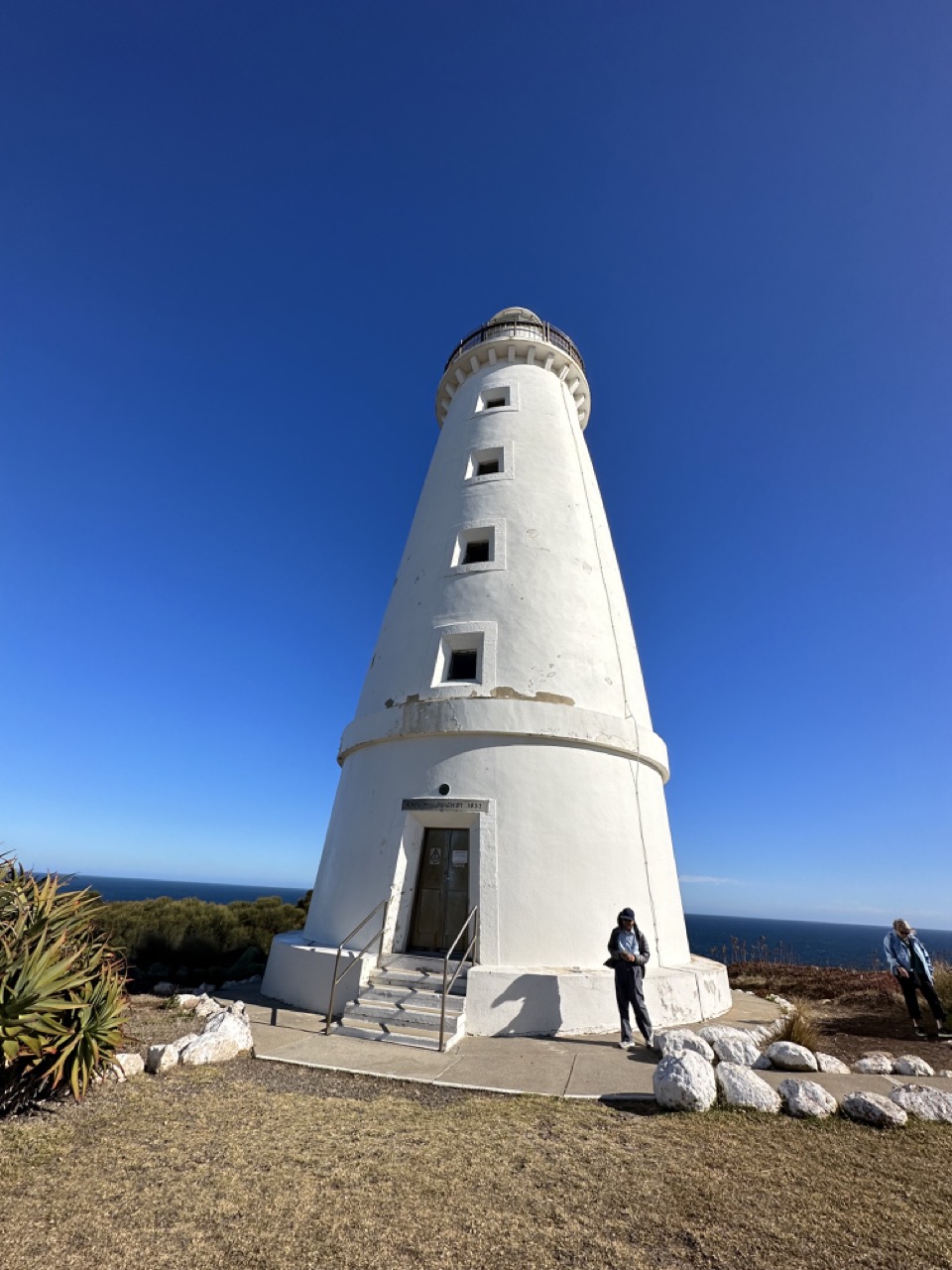
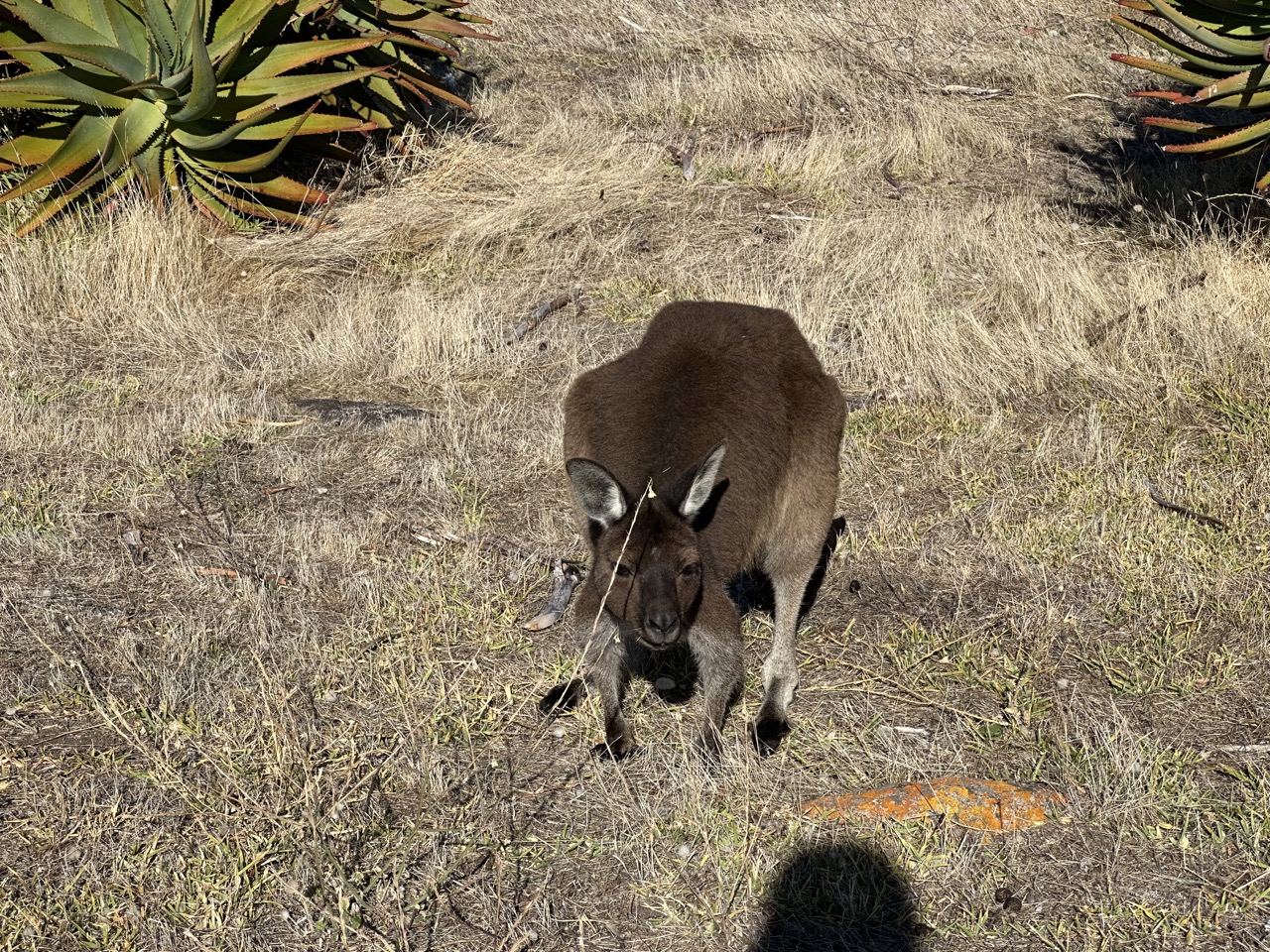
The lighthouse was the last stop on the tour, and we headed back to Penneshaw. I would be spending the night at the Kangaroo Island Seafront Hotel in Penneshaw. I could have booked two separate one-day tours and returned to Adelaide for the night, but the ferry and bus connections are so expensive that it would have been more expensive to do that.
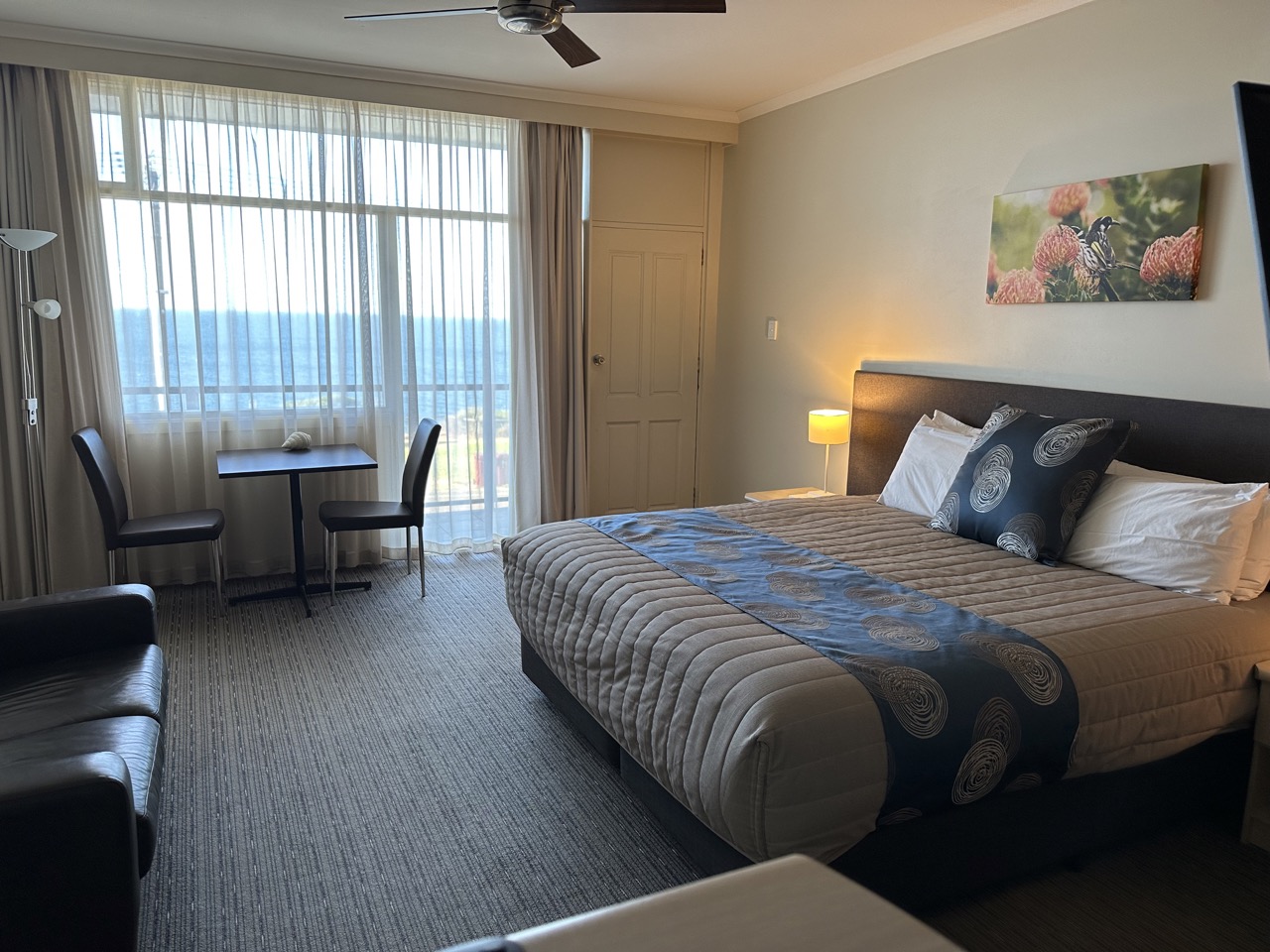
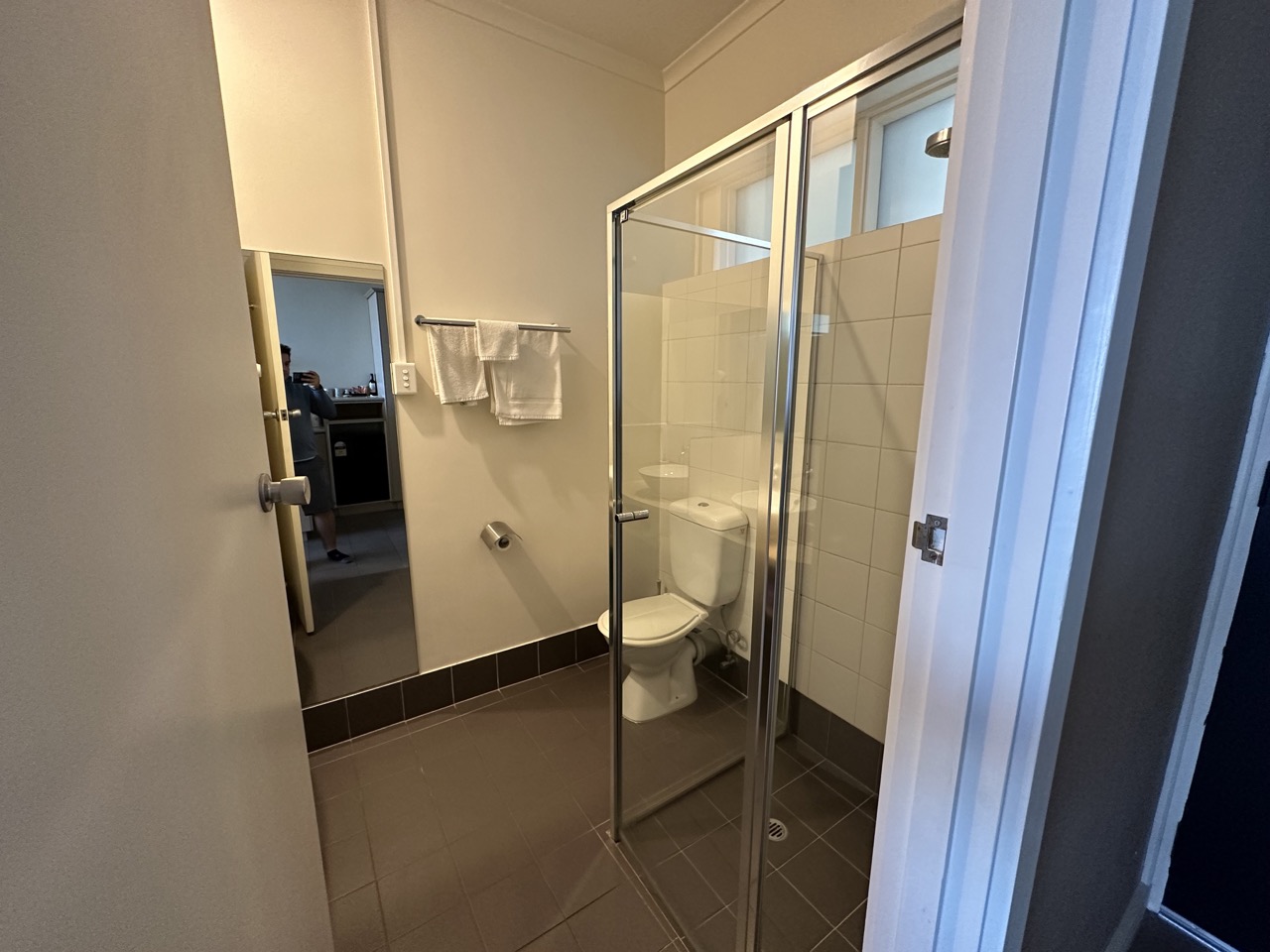
There are only a couple of restaurants in Penneshaw, and I chose to go to Fire and Smoke because the menu looked pretty good. There was a restaurant in my hotel, but there was a sign up that they only had pizza, garlic bread, and fries available. I lucked out as it turned out that today was "Chicken Parmi Tuesday", so I was able to get a chicken parm, salad, and fries, all for A$12. It was a large portion and really delicious.
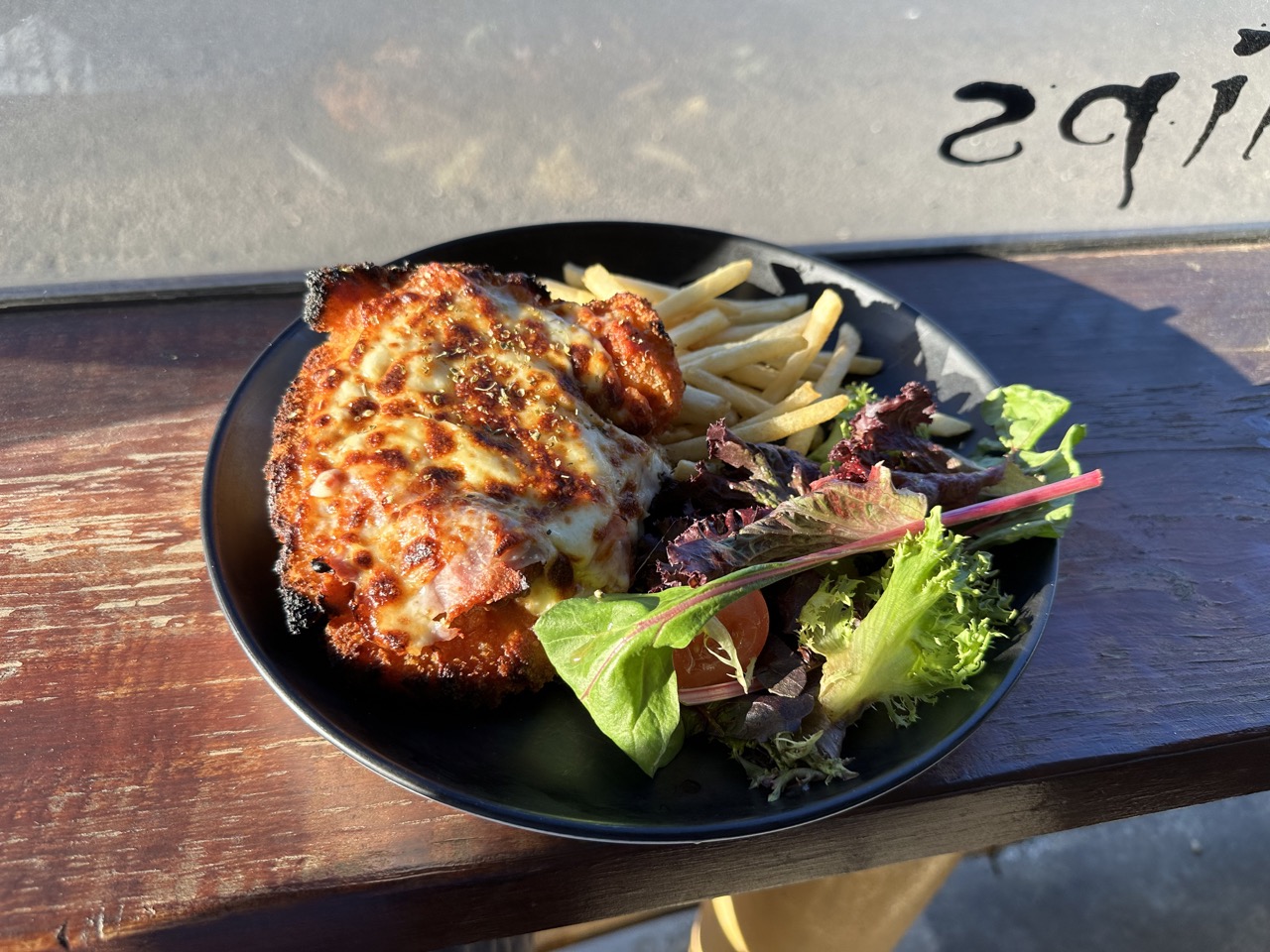
After dinner I headed over to the Kangaroo Island Sculpture Trail, located in Penneshaw. The trail is built on two sides of a ravine, and there is a bridge connecting both sides. It was a bit cold and my legs were still sore so I didn't explore the entire trail.
